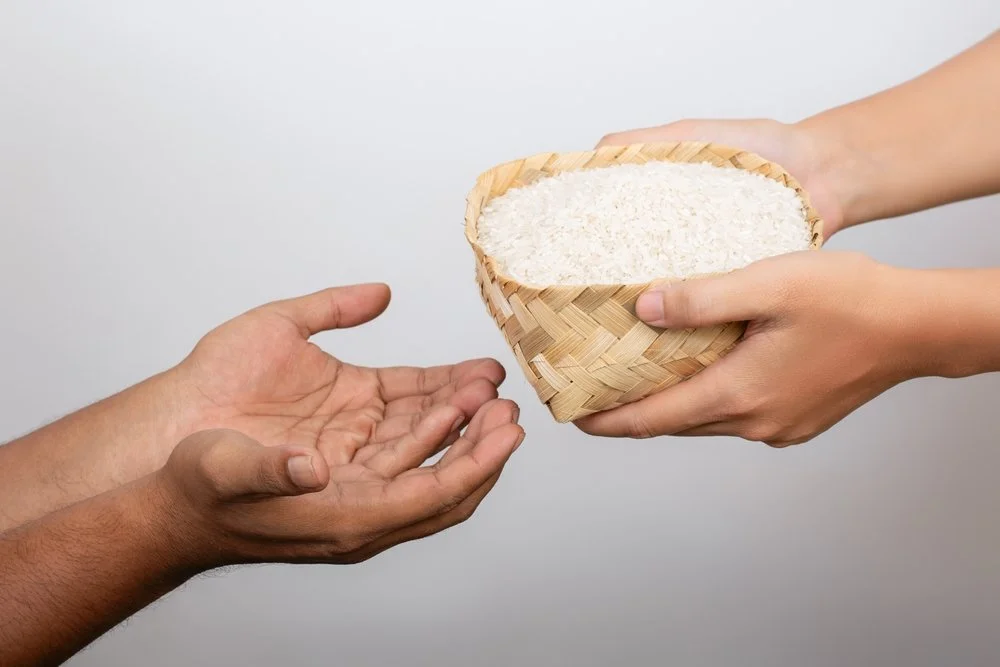Giving Feeds Our Soul, So Why Do We Worry About It So Much?
December 11, 2022
I reached for my wallet as I approached the bell ringer outside the grocery store.
But the thoughts going through my mind were plentiful. My first thought was, “What a great thing he is doing for people in need.” I then went to, “What will he think of me if I walk by and don’t give him anything?” Then, “Can I let him know that I have already given to other bell ringers so he doesn’t think I don’t want to give?”
Followed by, “The couple of extra dollars means less to me than it will to those receiving it.” And, “Next time I’ll pretend they aren’t there so I don’t get stuck giving every time I go anywhere.”
How did someone’s bell ringing turn into my hand wringing?
December is often when you will read articles on why you should use your retirement plans for donations when you are older than 70 ½, how you can bunch your gifting with appreciated stock into donor-advised funds to maximize your tax deductions while avoiding capital gains taxes, and how things like charitable gift annuities or remainder trusts can give you both a tax deduction and a lifetime income stream.
But those are just mechanics. They focus on how to give, not whether you want to give.
When you give to others, you are telling yourself that at life’s most basic level, you have enough. Money worries are about either getting what we don’t want or not getting what we do want. The act of giving affirms that we have more than enough. It might not stop us from wanting more, it just validates that we are fine where we are.
When you give to others, you engage in reciprocity. All giving results in getting something back. It may feed us intrinsically, it may improve our status, it may increase our influence, it may be a social requirement.
There are various reasons to give, and understanding what motivates you will help you align your giving with your values. Assess yourself honestly, without judgement. There is nothing wrong with getting something back for your gifts, just understand what it is.
As you explore what you are getting from your giving, you will also realize that some of the gifts you have been making have been habitual rather than thoughtful. Gifts that were important years ago may not meet your current criteria. Deciding what you no longer wish to support allows you to create room for the things that are currently relevant and inspiring.
One way to help understand your giving guidelines is to group together the common areas of your gifting. If there are some areas that stand out, you can explore other charities that support similar types of work.
Create a personal giving plan, complete with a written mission and vision statement, your funding priorities and how you will determine how much you wish to give. This helps you make more informed decisions. It also can help give you language when others ask you to support their causes for which you may not have an interest or do not align with your giving mission.
Regularly refer to your personal giving plan. You want to create your giving bucket with an amount that is meaningful but generally fixed. Saying yes to one charity means saying no or giving less to something else.
A helpful tool for record keeping are donor-advised funds (DAF) which can give you a clear history of where you have given as well as when you have given. If you are not using a DAF, sit down and make your gifts one time a year so you won’t get confused when the organizations keep asking for your money throughout the year. Keep track of your gifts in an organized file.
No matter your situation, don’t feel like your gifts won’t matter. You are trying to develop your charitable muscles, and those take time. You want to go at a pace that will allow you to feel you have done something that matters, but not so fast that you feel resentful and stop donating altogether.
While I may not give to every bell ringer, I will no longer avoid them either. Don’t let those mental conversations dissuade you from building a meaningful, personal charitable plan.
– Ross Levin
This article originally appeared in the Minneapolis Star Tribune on December 11, 2022





